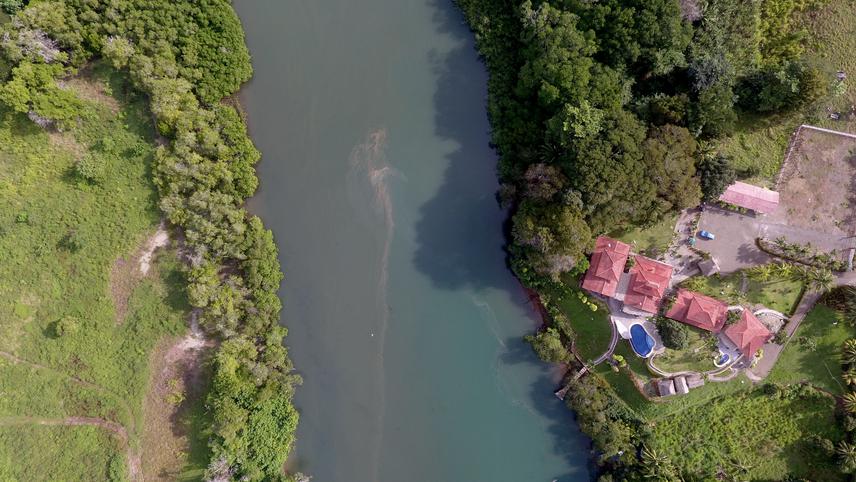Elpis J. Chávez
Other projects
7 Dec 2015
Movements and Habitat Use of Bull Sharks (Carcharhinus leucas) in a Costa Rican Tropical River
The purpose of this project is to determine the feeding habits and habitat selection of juvenile bull sharks (Carcharhinus leucas) at the Bongo (protected area) and Coyote (non-protected area) estuaries located at the north Pacific coast of Costa Rica, using stable isotope analysis and acoustic telemetry.
Identify sites of high importance for the survival of bull sharks (e. g. feeding grounds, nursery areas) is essential to propose effective conservation measures. Therefore, the aims of this project are: 1) to determine the trophic position of juvenile bull sharks in the Coyote and Bongo estuaries; 2) evaluate how the composition of the bull shark's diet varies in each estuary and 3) to determine if sharks are moving between the two estuaries. The information generated will help to understand the ecological role of bull sharks within the estuarine ecosystems of Costa Rica, and will form the basis for proposing effective conservation measures.

Studies on the trophic ecology of marine predators help to define the ecological role that they have within an ecosystem; they help us understand the trophic interactions that occur between individuals of these populations, their competitors and their prey. The bull shark (Carcharhinus leucas) is considered a top predator that contributes to the balance of coastal habitats. Through direct predation, bull sharks are able to regulate the populations of their prey and thus contribute to the stability of the trophic webs. Being one of the few species of elasmobranchs able to move freely between freshwater and saltwater environments in tropical and subtropical areas of the world, bull sharks may be of high importance for the balance and health of estuarine ecosystems, which are considered one of the most productive ecosystems in the world. Unfortunately, shark populations have been reduced due to overfishing, pollution, habitat degradation and lack of adequate fisheries management in various parts of the world. This reduction in their populations can cause changes in the structure of the trophic webs and in the function of the marine ecosystems that they inhabit. In Costa Rica, little information is available on the trophic ecology of the bull shark, which hinders the development of adequate management strategies for the conservation of this species.
Due to the importance and need to generate information about the ecological dynamics of the bull shark in estuarine environments, the objective of this study is to determine the trophic ecology of the bull shark in the Coyote and Bongo estuaries, located in Guanacaste province, Costa Rica. In this study we will perform a stable isotope analysis (SIA) to determine the tropic position and feeding habits of bull sharks in both estuaries. The combination of SIA and acoustic telemetry would allow us to determine the habitat selection, movements, and potential connectivity between both estuaries. Knowing the differences in the bull shark’s diet composition in both estuaries would help to identify the impact that fishing could have on the food resources used by this species, and identify needs to establish greater protection for the species. The information generated will lay the foundations of the bull shark’s trophic ecology in Costa Rica, and will improve our understanding of trophic relationships in estuarine systems.